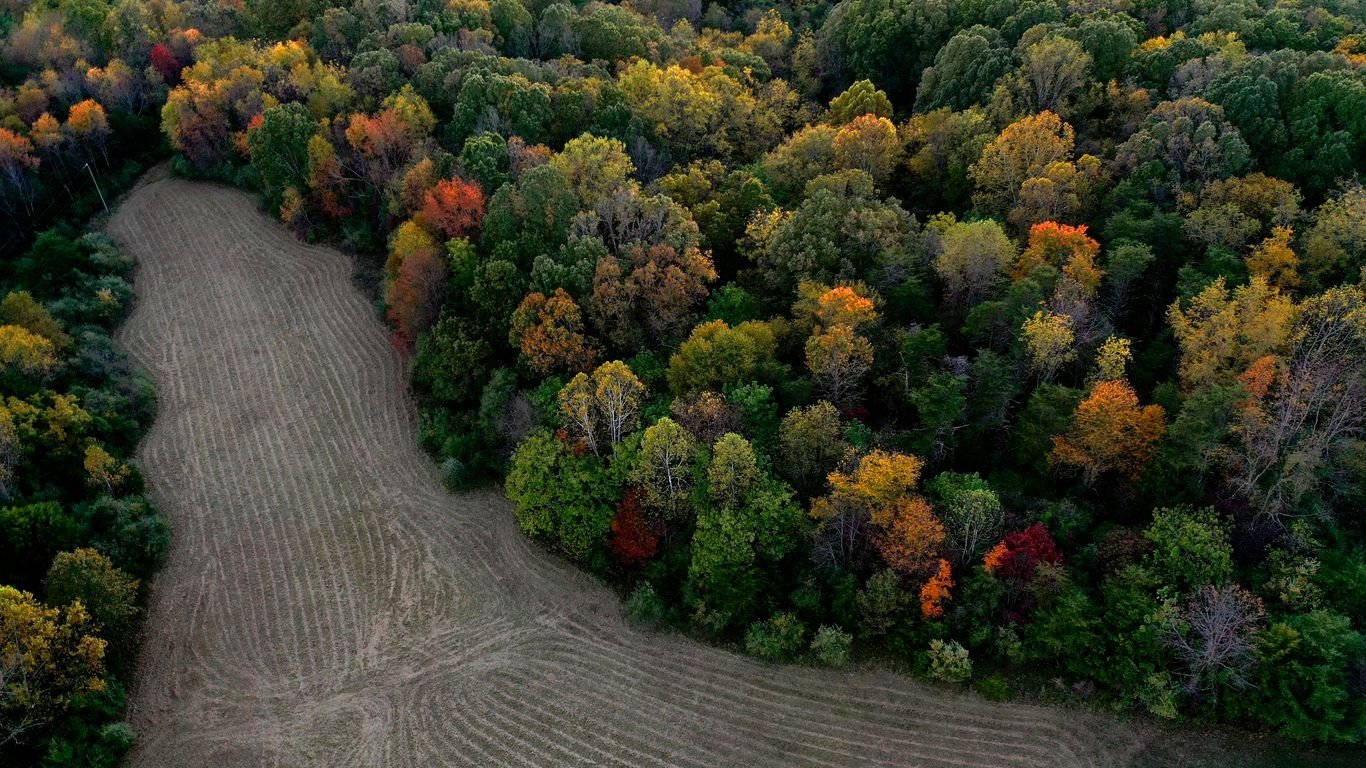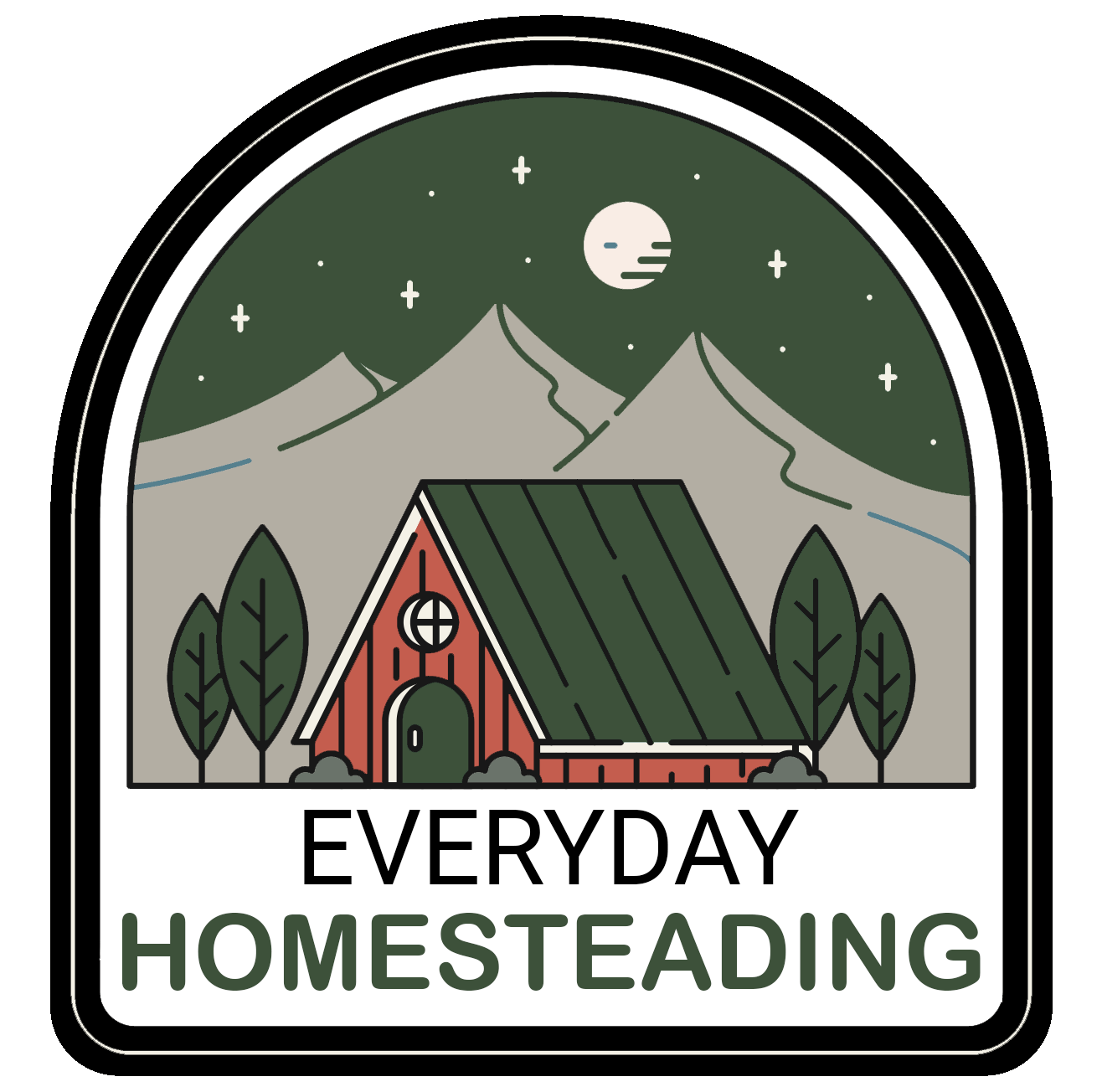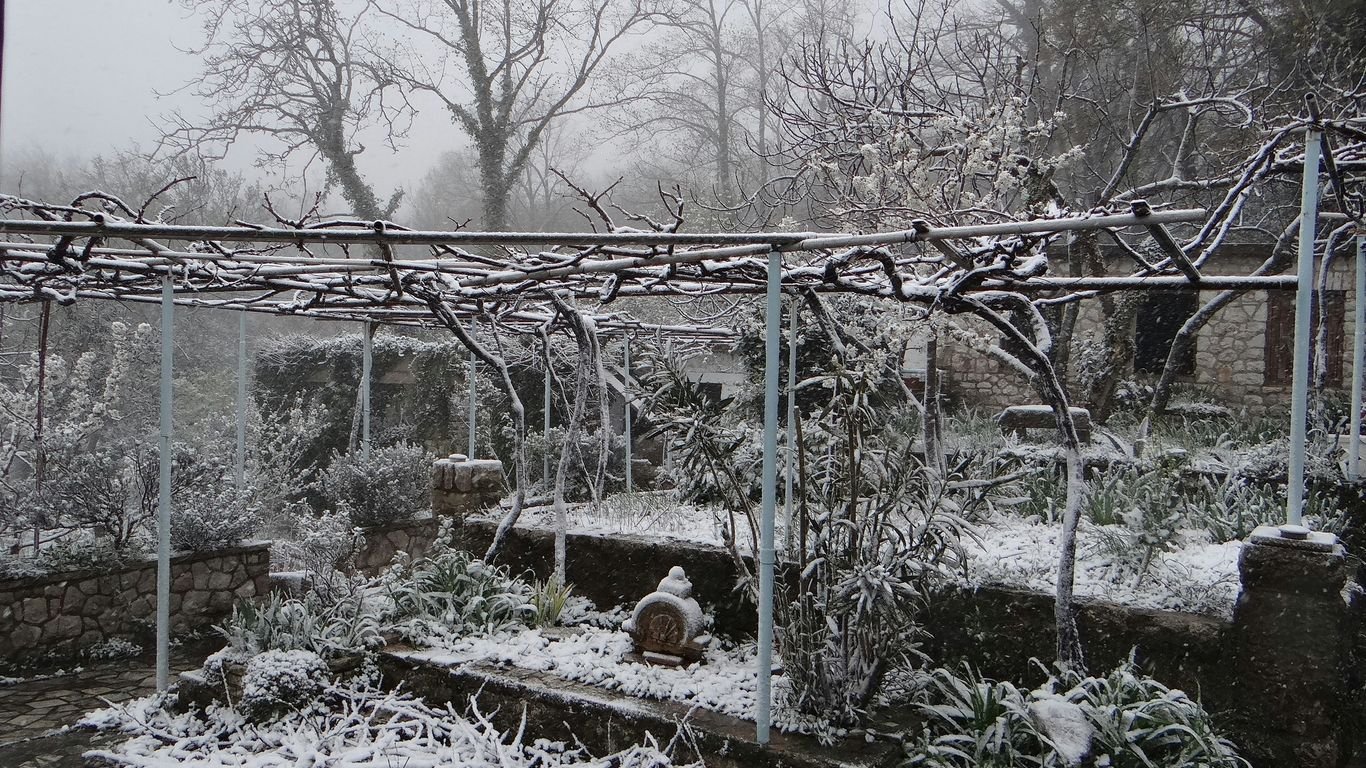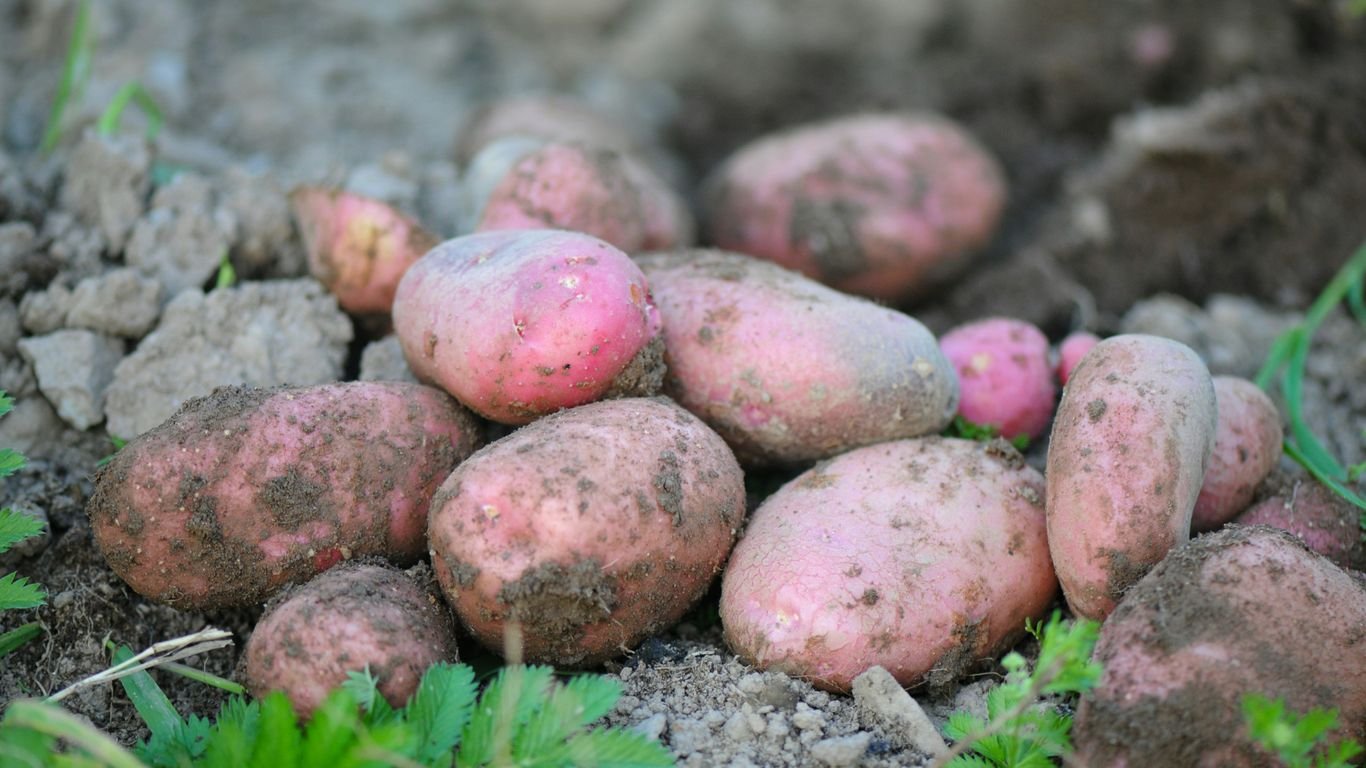Foraging in Ohio: Edible Plants, Nuts, and Spring Shoots

Ohio’s landscape is full of plants we can eat, and we’re excited to show you how to find them. Learning about foraging ohio means discovering a natural pantry right in our backyard. We’ll cover everything from the first spring shoots to fall nuts, making sure you know what to look for and how to stay safe. It’s a great way to connect with nature and find some tasty additions to our meals.
Key Takeaways
- Always know the local rules for foraging in Ohio before you collect any plants.
- Proper plant identification is super important to avoid eating something harmful.
- Spring is a great time to find fresh greens like dandelions and wild garlic.
- Don’t forget about the fall bounty, including nuts like black walnuts and acorns.
- Sustainable foraging means taking only what you need and leaving plenty behind.
Getting Started With Foraging Ohio

So, you’re thinking about diving into the world of foraging here in Ohio? That’s awesome! It’s a fantastic way to connect with nature, find some seriously tasty food, and maybe even save a few bucks. But before we go running out to the nearest patch of woods, we need to cover some important ground. Think of this as our pre-foraging pep talk.
Understanding Ohio’s Foraging Laws
First things first, we need to be good guests in nature’s house. This means understanding the rules. It’s not a free-for-all out there. Always know where you’re allowed to forage. Some places are a definite no-go, like state parks or nature preserves, where foraging is usually prohibited to protect the environment. Private property is a big no-no unless you have explicit permission from the landowner. It’s always best to check with local authorities or the specific land manager if you’re unsure about a public area. Being respectful of the law keeps foraging accessible for everyone and protects these natural resources. You can find more information on regulations through the Ohio Department of Natural Resources.
Safety First: Proper Plant Identification
This is probably the most critical part of foraging. Seriously, you cannot skip this. Eating the wrong plant can range from an upset stomach to something much more serious. We need to be 100% sure about what we’re picking.
Here’s how we can get started safely:
- Get a good field guide: Invest in a reputable, Ohio-specific field guide for wild edibles. Look for ones with clear pictures and detailed descriptions.
- Join a local group: Connecting with experienced foragers is invaluable. They can show you what to look for and, more importantly, what to avoid.
- Start with the "easy" ones: Begin with plants that are very common and have distinctive features, like dandelions or wild garlic. Don’t try to identify something obscure on your first outing.
- When in doubt, throw it out: This is the golden rule. If there’s even a tiny bit of uncertainty, don’t eat it. Period.
Misidentification is the biggest risk in foraging. It’s better to come home empty-handed than to risk your health. Take your time, be thorough, and prioritize learning over immediate gratification.
Best Times Foraging in Ohio
Ohio’s landscape changes with the seasons, and so does its edible bounty. Knowing when to look for what can make your foraging trips much more successful.
- Spring: This is prime time for greens! Think tender dandelion leaves, chickweed, and wild garlic. It’s when the plants are putting out their fresh, new growth, which is often the most palatable.
- Summer: Berries start to ripen! Black raspberries and elderberries are usually ready by mid-to-late summer. This is also a good time for some early greens.
- Fall: This is harvest season for nuts like black walnuts and acorns. Many fruits, like wild grapes and the unique pawpaw, also ripen in the fall. Jerusalem artichokes are also a fall find.
Foraging can technically happen year-round, but spring and fall really shine for variety. Planning your outings around these seasons will give you the best chance to find a good haul.
Springtime Greens Foraging
As the snow melts and the earth wakes up, Ohio offers a fantastic bounty of fresh, edible greens. It’s a great time to get outside and reconnect with nature while gathering some nutritious additions to our meals. We love starting the foraging season with these easy-to-find plants.
Dandelion Delights
Dandelions are everywhere, aren’t they? We used to think of them as just pesky weeds, but their leaves are actually quite tender and tasty in the spring, especially before they get too bitter. They’re packed with vitamins A and C, which is a nice bonus. We like to toss the young leaves into salads for a bit of a peppery kick. If you’re feeling adventurous, you can even cook the larger leaves like spinach or kale. And don’t forget the roots – they can be dried and ground for a coffee substitute. It’s amazing how much food we overlook right in our own backyards.
Chickweed’s Mild Flavor
Keep an eye out for chickweed, especially in lawns and garden beds where the soil has been disturbed. It’s a small, delicate plant that thrives in cooler weather, making it a perfect find in early spring and again in the fall. Its flavor is really mild, so it’s super versatile. We often add it to sandwiches or mix it into salads where it won’t overpower other ingredients. It’s also good in soups. Plus, it’s a good source of vitamins and minerals.
Wild Garlic’s Pungent Punch
If you catch a whiff of garlic in a meadow or woodland, you’re probably near wild garlic. The leaves are long and slender, and they have that unmistakable garlicky scent. You can use the bulbs, leaves, and even the flowers. We chop the leaves and use them like chives or a mild garlic, and the bulbs can be used much like regular garlic, though they’re a bit more pungent. It’s a great way to add some serious flavor to your dishes while getting some antioxidants.
Violets: A Springtime Treat
Little violet flowers popping up are a sure sign of spring. Not only are they pretty, but the leaves and flowers are edible too! The leaves are nice in salads, and the flowers can be used for decoration, made into tea, or even candied. We’ve also experimented with making violet syrup, which is a fun project. Just be sure you’re identifying them correctly; there are many plants that look similar.
Here’s a quick look at what we look for:
- Dandelion: Saw-toothed leaves, yellow flowers, fluffy seed heads. Leaves are best when young.
- Chickweed: Small, delicate leaves and stems, often found low to the ground in patches.
- Wild Garlic: Thin, hollow, grass-like leaves with a strong garlic smell. Look for small bulbs at the base.
- Violets: Heart-shaped leaves and distinctive purple or white flowers.
Always remember to be absolutely certain about your identification before consuming any wild plant. If in doubt, leave it out. It’s better to be safe than sorry when you’re foraging.
Nutrient-Rich Berry and Fruit Finds
When we think about foraging in Ohio, berries and fruits often come to mind, and for good reason! They’re not only delicious but also packed with vitamins and antioxidants. We’ve found some real gems out there that make our foraging trips extra rewarding.
Black Raspberry Bounty
These little dark jewels are a mid-summer treat. You’ll often find black raspberries growing along the edges of woods or in sunny clearings. Their deep color is a sign of the powerful antioxidants they contain. We love eating them fresh right off the bush, but they’re also fantastic in jams or baked into pies. Just be mindful of the thorns when you’re reaching for them!
Elderberry Elixirs
Elderberries are another late-summer favorite. They grow in clusters on shrubs, usually in moist areas. While the raw berries can cause stomach upset for some, they are incredibly useful when prepared. We often make elderberry syrup, which is fantastic for boosting our immune systems, especially as the weather starts to turn cooler. They can also be made into teas or even wine for a more adventurous forager.
The Unique Pawpaw
Ah, the pawpaw! This is one of Ohio’s most interesting native fruits. You’ll find pawpaw trees in damp, shady spots, often near rivers. The fruit itself is quite large, with a creamy, custard-like texture and a flavor that reminds us of a mix between banana and mango. It’s a truly tropical taste from right here in Ohio! Pawpaws ripen in early fall. We like to eat them fresh, but they’re also amazing blended into smoothies or used in baking. Just remember to scoop out the seeds before you enjoy the sweet flesh.
Edible Nuts and Seeds Foraging

When we think about foraging in Ohio, our minds often jump to greens and berries, but we shouldn’t forget about the incredible bounty of nuts and seeds available. These are fantastic for adding substance and healthy fats to our diets, especially as we head into the cooler months. It’s a rewarding part of foraging that connects us to the cycles of nature.
American Hazelnut Harvest
American hazelnuts, often found growing in thickets along woodland edges and near streams, are a real treat. We usually start looking for these in late summer and early fall. The nuts themselves are smaller than the cultivated varieties, but they pack a wonderful, slightly sweet flavor. It’s best to gather them after they’ve naturally fallen from the trees. We often roast them lightly to bring out their best taste, making them a perfect snack or a great addition to baked goods. You can also grind them into a meal for baking.
Black Walnut Treasures
Black walnuts are unmistakable with their tough, dark, and deeply wrinkled hulls. Finding them means a bit of work, as you’ll need to crack those thick shells. But oh, the reward! The rich, bold flavor of the black walnut kernel is something special. We love using them in cookies, brownies, or even savory dishes. They’re packed with healthy fats and protein, making them a really satisfying find.
- Preparation: After gathering, let the hulls soften for a few days to make removal easier. Then, crack the hard inner shell. A vise or a heavy hammer can work, but be careful!
- Uses: Baking (cookies, cakes, breads), topping for salads or ice cream, or just eaten as a snack.
- Season: Typically available in the fall.
Acorn Adventures
Acorns might seem like a lot of work, but they’ve been a staple food for humans for millennia. The key with acorns is understanding that most varieties contain tannins, which can make them bitter and even indigestible if not processed correctly. We usually focus on acorns from oak trees like the White Oak, which tend to have lower tannin levels. The process involves leaching out the tannins, often by boiling or soaking the acorn meal in water.
Here’s a basic rundown of how we prepare them:
- Gather: Collect acorns, discarding any that are worm-eaten or damaged.
- Shell and Grind: Remove the shells and grind the nutmeats into a coarse meal.
- Leach: This is the most important step. We typically spread the meal in a thin layer on a baking sheet and rinse it repeatedly with hot water until the water runs clear and the bitterness is gone. Alternatively, you can soak the meal in cold water for several hours, changing the water periodically.
- Dry and Use: Once leached, dry the acorn meal thoroughly. It can then be used like flour in various recipes, from pancakes to bread.
Acorns offer a sustainable and abundant food source once you get the hang of the preparation. It’s a taste of history in every bite, connecting us to the resourcefulness of our ancestors.
Remember, proper identification is always key. If you’re unsure about a nut or seed, it’s always best to err on the side of caution and leave it be. Happy foraging!
More Edible Plants Foraging Ohio

Beyond the usual suspects, Ohio offers a few more wild edibles that are worth seeking out. We’re talking about plants that might surprise you with their versatility and flavor.
Stinging Nettle’s Surprising Use
Don’t let the name fool you! Stinging nettle, when handled with gloves (seriously, wear gloves!), is a nutritional powerhouse. Once cooked, those stinging hairs disappear, leaving behind a nutrient-dense green that’s packed with vitamins and minerals. Think of it like spinach, but with a bit more oomph. We like to add it to soups or sauté it with a bit of garlic. It’s a fantastic way to get a dose of iron and vitamins A and C.
Curly Dock’s Versatility
Curly dock is another plant you’ll find popping up in fields and along roadsides. The young leaves have a pleasant, slightly tart flavor that works well in salads. As the plant matures, the leaves get tougher, but the seeds can be harvested and used as a spice, similar to pepper. We’ve found that older leaves are best when cooked, much like nettles.
Sumac Berries for Flavor
When you see those vibrant red clusters of berries on a sumac bush, don’t mistake them for something you can just pop in your mouth. These aren’t your typical berries. We’re talking about staghorn sumac, and its berries are used for flavor, not for eating whole. You can soak them in water to create a tangy, lemonade-like drink, or dry them and grind them into a spice. It adds a wonderful citrusy note to dishes. Just be sure you’re identifying staghorn sumac and not its poisonous look-alikes!
Here’s a quick rundown on how we prepare sumac berries:
- Harvesting: Look for the fuzzy, cone-shaped clusters of red berries in late summer and fall.
- Preparation: Rinse the berries well.
- Making a Drink: Steep about a cup of berries in 4 cups of cold water for 15-30 minutes. Strain well.
- Using as a Spice: Dry the berries completely and grind them into a powder. Use sparingly!
Fall Foraging Favorites

As the leaves start to turn those amazing shades of red and gold, our thoughts often turn to cozy sweaters and warm drinks. But for us foragers, fall means a whole new bounty is ready for the picking! We’re talking about some seriously satisfying finds that make the cooler weather totally worth it.
Jerusalem Artichokes
These aren’t actually artichokes, and they don’t really have anything to do with Jerusalem. They’re actually the tubers of a type of wild sunflower, and they’re pretty neat. We find them popping up in fields and along roadsides. When you dig them up, they look a bit like knobby ginger root. The taste is surprisingly similar to a potato, but with a slightly sweeter, nuttier edge. We like to slice them thin and toss them into salads for a bit of crunch, or roast them up until they’re tender. Just a heads-up, they can be a bit tricky to peel, but it’s worth the effort.
Here’s a quick rundown on how we like to prepare them:
- Roasting: Toss sliced tubers with olive oil, salt, and pepper. Roast at 400°F (200°C) for about 20-30 minutes, until tender.
- Salads: Slice thinly and add raw to your favorite green salad for a fresh, crisp texture.
- Soups: Add diced tubers to hearty fall soups for extra body and flavor.
Wild Grapes Galore
Keep an eye out for those tangled vines climbing up trees and over fences, especially in sunny spots. Those are likely wild grapes! They’re usually smaller and tarter than the ones you buy at the store, but they pack a serious flavor punch. We’ve found that late summer into fall is the prime time to gather them. They’re fantastic for making jelly, jam, or even a really flavorful wine if you’re feeling ambitious. Just be sure you’re grabbing Vitis species and not something that looks similar but isn’t edible.
Remember, when foraging for grapes, look for clusters of small, dark berries. They’ll often have a bit of a dusty bloom on them. Always do a taste test with just one or two before making a big batch of anything, just to be sure.
We usually gather more than we can use right away, so we often freeze them for later. They’re great to have on hand when you want to add a burst of tartness to a recipe or just enjoy a taste of autumn long after the season has passed.
Wrapping Up Our Foraging Adventure
So, there you have it! Ohio is really full of edible plants, just waiting for us to find them. Whether we’re grabbing some greens or collecting berries, these wild foods can really add something special to our meals. It’s a fun adventure, and it’s important to remember to be respectful of nature while we’re out there. You never know what delicious discovery is just a walk away. Let’s get out there, taste what Ohio’s wilderness has to offer, and make our meals a little more interesting. And always, always forage responsibly so these plants are around for years to come.
Frequently Asked Questions
Are there any rules we need to follow when we go foraging in Ohio?
Yes, there are definitely rules! We can’t just pick plants anywhere. Some places, like state parks or special nature spots, have strict rules. We always need to check the local rules and get permission if we’re on someone else’s land. It’s also super important to only take what we need and leave plenty for nature.
How do we make sure we’re picking the right plants and not something poisonous?
This is the most important part! We need to be really good at telling plants apart. We suggest getting a good guide book for Ohio plants, or even better, go with someone who already knows a lot about foraging. Never, ever eat a plant if you’re not 100% sure what it is. It’s always best to start with just a tiny bit if you’re trying something new.
When is the best time of year to go foraging in Ohio?
We can find things to forage almost all year long! Spring is fantastic for fresh greens, and fall is amazing for nuts and berries. Summer brings its own set of tasty fruits, too. So, really, there’s always something to look for, but spring and fall are usually the busiest and most rewarding times for us.
What if we accidentally eat a plant that makes us feel sick?
If we start feeling bad after eating a wild plant, we should stop eating it right away and tell an adult or a doctor. Knowing exactly which plant made us sick can really help the doctors figure out what to do.
Can we grow some of these wild foods in our own gardens?
That’s a great idea! Many of these wild plants can actually be grown at home. If we start our own little wild plant garden, we’ll have a steady supply of these healthy foods without having to go out and search for them every time.
Are there any specific places in Ohio that are really good for finding edible plants?
Ohio’s woods, fields, and even some parks are full of edible goodies! We’ve found that places with a mix of sun and shade, especially near water, often have a lot of variety. But remember, always check the rules for the specific area you’re in before you start picking.






